Auctions
The First Live Auction at Christie’s New York Since 2020 Delivers a Satisfying $219.3 Million Result, But Leaves Little to Chance
The 21st-century evening sale at Rockefeller Center set 10 new artist records.
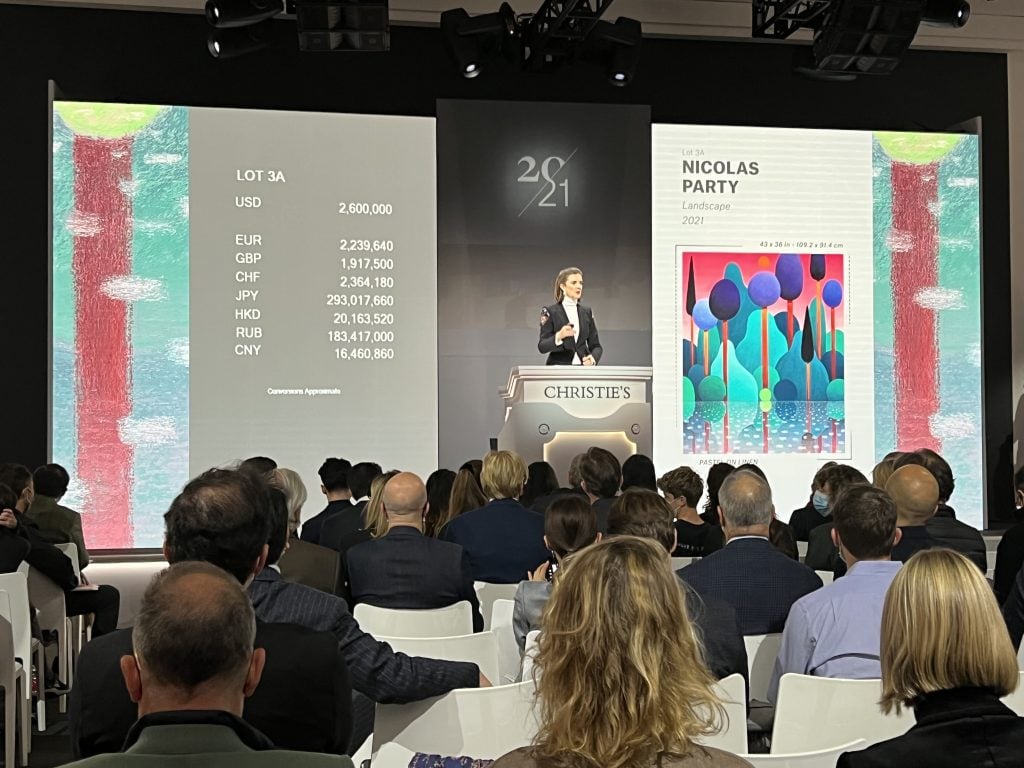
The 21st-century evening sale at Rockefeller Center set 10 new artist records.

A billboard-size painting by Jean-Michel Basquiat led a white-glove sale of 21st-century art, kicking off two weeks of New York auctions that are viewed as a litmus test for the art market—only with even higher stakes this time around.
It was the first time Christie’s had welcomed clients into its Rockefeller Center salesroom since March 2020, and the impact of the past 20 months could be felt everywhere: from the jazz trio greeting guests downstairs and the new teleprompter setup for auctioneer Gemma Sudlow to the Ladurée macaroons offered upon exit. The message was clear: Auctions are now full-blown entertainment, catering to both a local and global audience.
The musty, mid-century chic has been replaced by scrubbed glamour so white and gleaming it strained the eye. Gone are the days when hundreds of people filled the room, practically sitting in each other’s laps. To create a sense of security for its first big autumn outing, Christie’s brought in just 180 guests, mostly dealers and advisers, all in masks. Always a choreographed affair, the night’s auction took on the court-side feel of a professional basketball game, with a film crew swarming to and fro and giant screens live-streaming bids from Hong Kong and London.
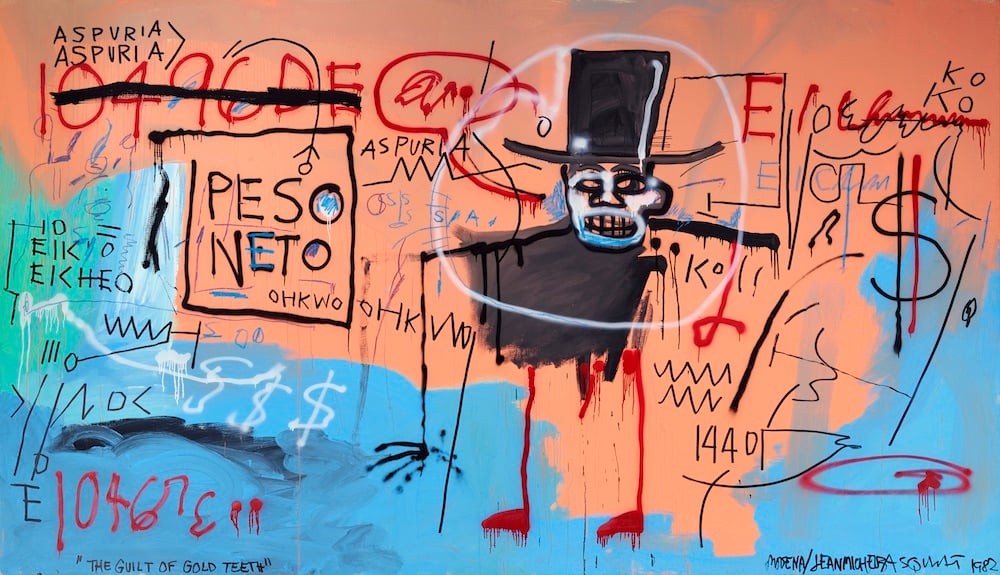
Jean-Michel Basquiat, The Guilt of Gold Teeth (1982), which sold for $40 million. Image courtesy of Christie’s.
The 40-lot sale tallied $219.3 million, near the high estimate of $230.4 million (final prices listed include buyer’s premium, while estimates do not). Every lot sold, and ten artist records were set, for established names like Peter Doig ($39.9 million) and Barbara Kruger ($1.2 million) as well as emerging talents like Hilary Pecis ($870,000) and Issy Wood ($468,750). And, in another sign of the times, the auction featured three NFT artworks—including the first hybrid NFT-video sculpture by Beeple.
“It was a real thrill to build a sale like this,” said Ana Maria Celis, Chrsitie’s senior vice president and head of sale. “It’s phenomenal.”
If the take was notably smaller than last year’s $340 million total—in an event pushed up to October to avoid the turmoil surrounding the final days of the U.S. presidential election—this recent sale reflects the house’s decision to split its postwar and contemporary offerings into 20th- and 21st-century categories, alongside its Impressionist and Modern art.
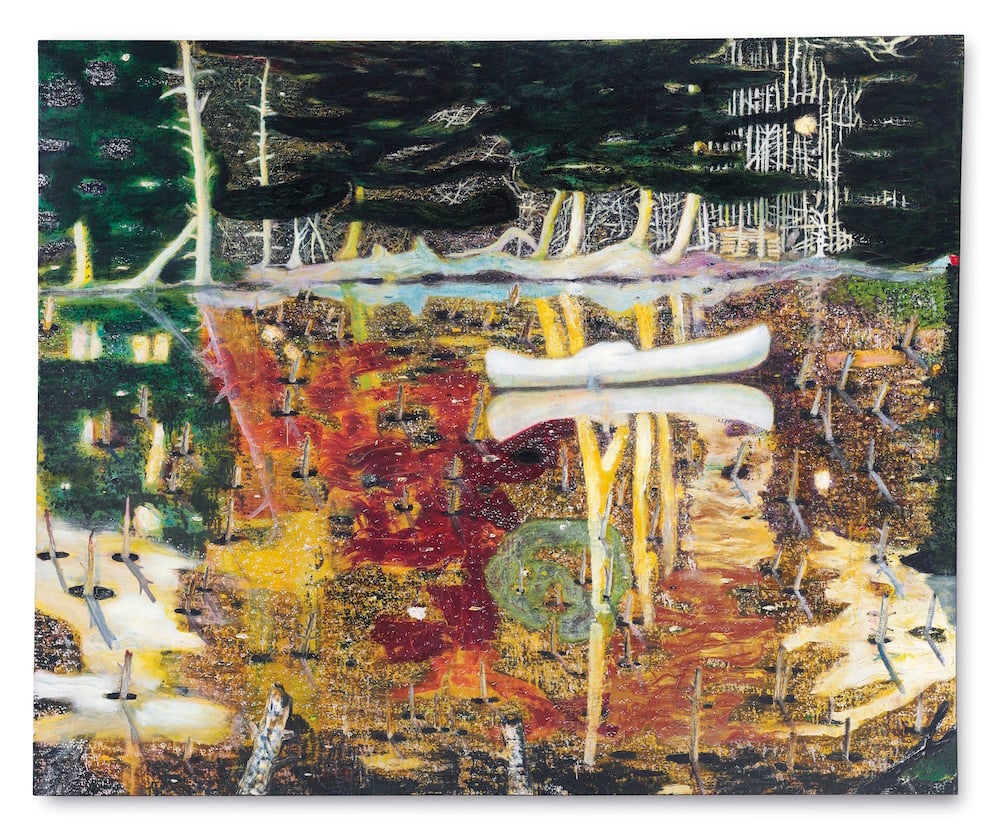
Peter Doig, Swamped (1990), which sold for $39.9 million. Image courtesy of Christie’s.
That split seemed to pay off, with a frenzied bidding for strategically stocked works from in-demand names, some of which were consigned to raise money for charity. But the solid top-line results masked a more complex reality. Christie’s worked hard to find backers for 80 percent of lots by low estimate, ensuring the works would be sold. Many, including the top Basquiat, ended up going to the third-party guarantors without any competitive bidding at all.
Consignors wanted security, and so did Christie’s. The guarantees were a result of “coming out of two years of uncertainty,” said Alex Rotter, the house’s chairman of 20th- and 21st-century art. “This was our first live sale. There was a little bit of, ‘I don’t know what’s going to happen.’”
Such was the case with the evening’s top lot, The Guilt of Gold Teeth (1982), estimated within a wide swath of $40 million to $80 million, which sold (presumably to its third-party guarantor) for $40 million. The work was consigned anonymously by Jose Maria Cano, a Spanish artist, collector, and former member of pop-rock band Mecano, who loved the legendary street artist so much he even dedicated a song to him. The painting last appeared at auction in 1998, selling for $387,500, according to the Artnet Price Database, when Cano presumably bought it, given that the work has been in the same collection ever since, according to Christie’s.
More contested, however, was the second Basquiat of the night, Flash in Naples (1983), which was consigned anonymously by Peter Brant and fetched $19.8 million, surpassing the high estimate of $18 million after fees.
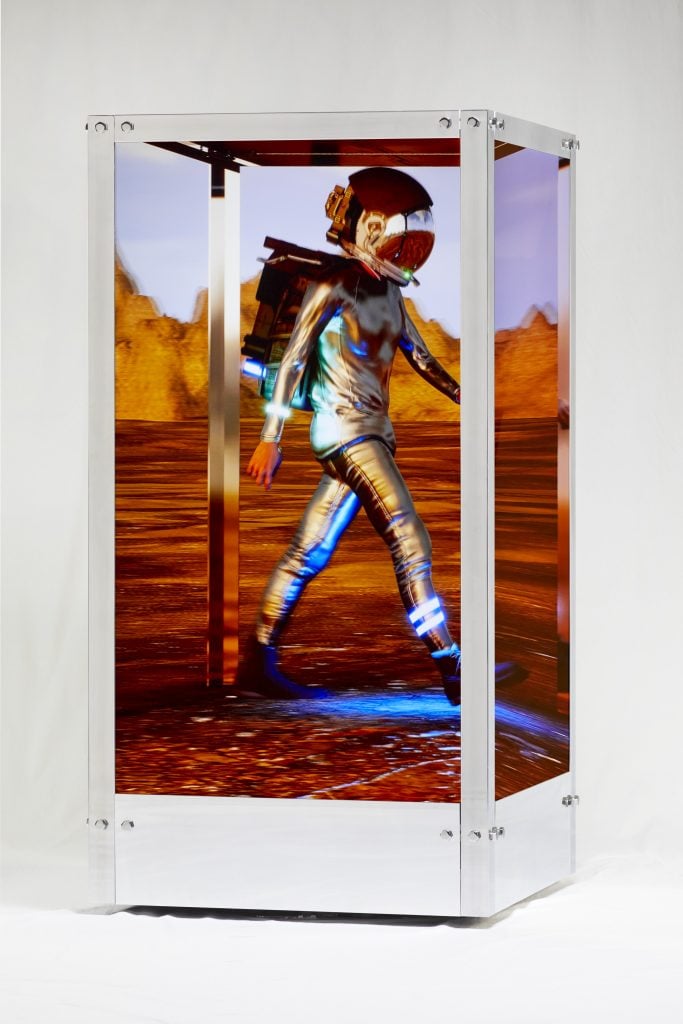
Beeple, HUMAN ONE (2021), sold for $28.985 million. Image courtesy of Christie’s.
Also sparking interest was kinetic sculpture-NFT combo by Beeple, which fetched $28.9 million, almost twice the estimate of $15 million. It was the first physical artwork by the artist better known for his breakout NFT that sold for $69 million in March, also at Christie’s.
Titled HUMAN ONE, the rotating, telephone booth-size structure mesmerizingly combines both the digital and the physical and drew at least three bidders. It ended up selling to an online bidder based in Switzerland, who beat out competitors in Hong Kong and in the room. He later revealed himself on Twitter as Ryan Zurrer, founder of alternative-asset firm Dialectic AG in Zug.
Unlike most auction lots, HUMAN ONE was consigned directly by the artist, whose real name is Mike Winkelmann, and guaranteed by Christie’s. It was also backed by a third-party bid. The winner has the option to pay for the work in crypto, Christie’s said. Winkelmann, who will receive the proceeds from the sale, later came into the room and placed several bids on an NFT work by Urs Fischer, which ended up selling for $225,000 to the phones.
Peter Doig’s Swamped (1990), which was also backed by a third party, drew only one bidder, represented by Rotter, and sold for $39.9 million—just above its unpublished estimate of more than $35 million, but nevertheless an artist record. The same buyer also purchased the most expensive of the three Cindy Sherman “Centerfolds” of the day for $3.15 million.
Despite the early hour for Hong Kong, Asian bidding propelled prices, especially for figurative works by younger artists. Upstairs Interior (2019) by Hilary Pecis, estimated at $60,000 to $80,000, surged to $870,000, secured by a Hong Kong representative, Elaine Holt. Landscape (2021) by Nicolas Party, offered to raise money for the New York AIDS Memorial, soared to $3.3 million, more than 10 times its low estimate of $300,000, and was also purchased by an Asian client.
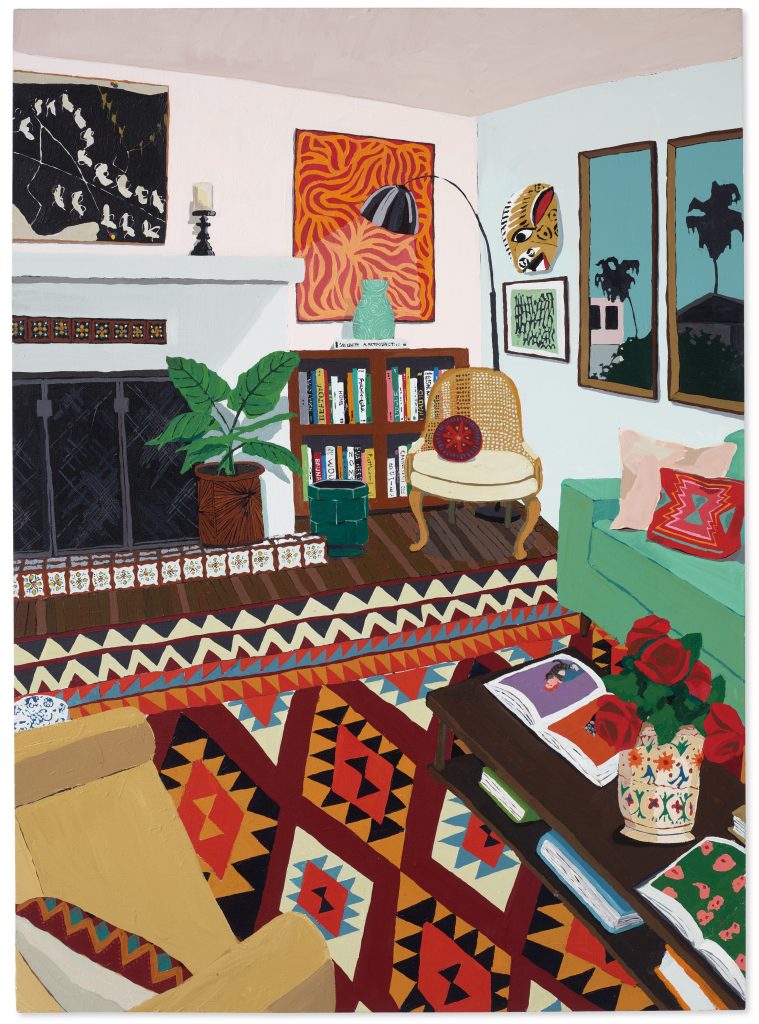
Hilary Pecis, Upstairs Interior (2019), sold for $870,000. Image courtesy of Christie’s.
The subsection “Image World: Property from a Private American Collection” made up one third of the auction’s lots, and the satisfying if somewhat mixed results perhaps came closest to signaling the overall state and tastes of the market. The anonymous consignment was a labor of love of Abe Steinberger, a New Jersey neurologist who has been collecting for 25 years, focusing primarily on Pictures Generation artists. Of 41 pieces total that carried an estimate of $33.9 million to $49.7 million, the 13 that sold last night already cleared $36.5 million. To win the collection, Christie’s guaranteed Steinberger an undisclosed amount, then outsourced its risk to third parties through irrevocable bids.
The trove included three major photographs from Sherman’s “Centerfolds” series, offered in the same sale for the first time; four paintings by Christopher Wool, whose market has been on shaky ground lately. The three Wool paintings sold on single bids to guarantors. Sherman, surprisingly, didn’t go through the roof, although she was represented by a series that was coveted by collectors just a few years ago. Kruger’s Untitled (Your Manias Become Science) (1981), however, fetched an artist-record $1.2 million, above its $700,000 high estimate, and Richard Prince’s Untitled (Cowboy) (1997), from an edition of two plus one artist proof, ratcheted up to $3 million in its first turn on the auction block (it was estimated at $1.5 million to $2.5 million).
As Rotter said, “At the end of the day, if you pre-sell them or post-sell them, you sell them. It’s sold.”